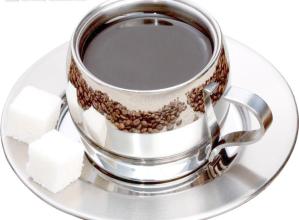What is the change in flavor after blending?
Highlighting the good flavor and eliminating the bad things will also be the purpose of blending, want a more balanced cup of coffee, want a cup of acidity, strong mellow thickness and great plum fruit aroma and great fat? That matching must be a shortcut, for the business operation of such a high cost and difficult to find.
A good name will add a lot of points to the match, making it easier to create selling points such as the "black cat" match of "intellectuals" and the "curlers" of "Tree Pier City" are all successful examples.
How do you match it?
Blending coffee is not a random mix of coffee beans. Sometimes the blending of two kinds of boutique coffee will suppress each other's unique flavor; the blending is not just a combination of several boutique coffees together, it is like a painter adjusting and creating charming colors in the color palette. There is a misunderstanding, is to ask this secret recipe, in fact, there is no secret recipe. The secret of coffee blending is not the secret that Coca-Cola locks in the bank safe. Matching is based on the flavor to choose beans, Green buyer, Roaster, Blender work together to create a popular mix, none of them are indispensable.
First of all, raw bean buyers want to buy raw beans with the right price and flavor for the company, so they have been testing the cup to find those flavors, such as:
Sour
Mocha, Hawaii Kona, Kenya, Mexico, Guatemala, Costa Rica SHB, Gillimanjaro, Colombia, Delvado, Western Hemisphere washing high quality new beans and so on.
Bitter
Java, Mantenin, Bogota, Congo, Uganda, etc.
Gan
Colombia, Venezuela (aged coffee), Blue Mountains, Gillimanjaro, Mocha, Guatemala, Mexico, Kenya, Santos, Brazil, Haiti, etc.
Alcohol
Colombia, Mocha, Blue Mountains, Guatemala, Costa Rica, etc.

Important Notice :
前街咖啡 FrontStreet Coffee has moved to new addredd:
FrontStreet Coffee Address: 315,Donghua East Road,GuangZhou
Tel:020 38364473
- Prev

Story characteristics of four major coffee producing areas in the world Coffee beans from North America, Africa, Asia, Central and South America
Beans taste different according to the region where they grow. The factors that affect the taste are the variety of coffee trees, the soil properties of growth, the climate and altitude of the cultivation garden, the care of picking results, and the process of bean treatment, etc. These elements vary from region to region, while bakers and integrated manufacturers look for the characteristics of each region, so that the comprehensive products have their own unique typical flavor. You can try to chase.
- Next

Will the coffee taste better than the original coffee?
Before blending any coffee, you should first understand the taste characteristics of all kinds of coffee, and at least make it clear in your heart that the taste of the kind of coffee you want to mix can not be achieved by any single coffee. It would be a pity if the blended coffee doesn't taste better than one or more of them. It would be better not to match. If you use which qualities
Related
- Does Rose Summer choose Blue, Green or Red? Detailed explanation of Rose Summer Coffee plots and Classification in Panamanian Jade Manor
- What is the difference between the origin, producing area, processing plant, cooperative and manor of coffee beans?
- How fine does the espresso powder fit? how to grind the espresso?
- Sca coffee roasting degree color card coffee roasting degree 8 roasting color values what do you mean?
- The practice of lattes: how to make lattes at home
- Introduction to Indonesian Fine Coffee beans-- Java Coffee producing area of Indonesian Arabica Coffee
- How much will the flavor of light and medium roasted rose summer be expressed? What baking level is rose summer suitable for?
- Introduction to the characteristics of washing, sun-drying or wet-planing coffee commonly used in Mantenin, Indonesia
- Price characteristics of Arabica Coffee Bean Starbucks introduction to Manning Coffee Bean Taste producing area Variety Manor
- What is the authentic Yega flavor? What are the flavor characteristics of the really excellent Yejasuffi coffee beans?

